The United States population is projected by the U.S. Census Bureau to be 307,261,000,[2] including an estimated 11.2 million illegal immigrants.[116] The United States is the third most populous nation in the world, after China and India. Its population growth rate is 0.89%,[1] compared to the European Union's 0.16%.[117] The birth rate of 14.16 per 1,000, 30% below the world average, is higher than any European country's except Albania and Ireland.[118] In fiscal year 2008, 1.1 million immigrants were granted legal residence.[119] Mexico has been the leading source of new residents for over two decades; since 1998, China, India, and the Philippines have been in the top four sending countries every year.[120] The United States is the only industrialized nation in which large population increases are projected.[121]
The United States has a very diverse population—thirty-one ancestry groups have more than a million members.[122] White Americans are the largest racial group, with German Americans, Irish Americans, andEnglish Americans constituting three of the country's four largest ancestry groups.[122] African Americans are the nation's largest racial minorityand third largest ancestry group.[122][123] Asian Americans are the country's second largest racial minority; the two largest Asian American ethnic groups are Chinese American and Filipino American.[122] In 2008, the U.S. population included an estimated 4.9 million people with some American Indian or Alaskan native ancestry (3.1 million exclusively of such ancestry) and 1.1 million with some native Hawaiian or Pacific island ancestry (0.6 million exclusively).[123]
| Race/Ethnicity (2008)[123] | |
|---|---|
| White | 79.8% |
| African American | 12.8% |
| Asian American | 4.5% |
| Native American and Alaskan Native | 1.0% |
| Native Hawaiian and Pacific Islander | 0.2% |
| Multiracial | 1.7% |
| Hispanic (of any race) | 15.4% |
The population growth of Hispanic and Latino Americans (the terms are officially interchangeable) is a major demographic trend. The 46.9 million Americans of Hispanic descent[123] are identified as sharing a distinct "ethnicity" by the Census Bureau; 64% of Hispanic Americans are of Mexican descent.[124] Between 2000 and 2008, the country's Hispanic population increased 32% while the non-Hispanic population rose just 4.3%.[123] Much of this growth is from immigration; as of 2007, 12.4% of the U.S. population was foreign-born, with 54% of that figure born in Latin America.[125] Fertility is also a factor; the average Hispanic woman gives birth to three children in her lifetime. The comparable fertility rate is 2.2 for non-Hispanic black women and 1.8 for non-Hispanic white women (below thereplacement rate of 2.1).[121] Minorities (as defined by the Census Bureau, all those beside non-Hispanic, non-multiracial whites) constitute 34% of the population; they are projected to be the majority by 2042.[126]
About 79% of Americans live in urban areas (as defined by the Census Bureau, such areas include the suburbs); about half of those reside in cities with populations over 50,000.[127] In 2006, 254 incorporated places had populations over 100,000, nine cities had more than 1 million residents, and four global cities had over 2 million (New York City, Los Angeles, Chicago, and Houston).[128] There are fifty metropolitan areaswith populations greater than 1 million.[129] Of the fifty fastest-growing metro areas, twenty-three are in the West and twenty-five in the South. The metro areas of Atlanta, Dallas, Houston, Phoenix, and California's Inland Empire all grew by more than three-quarters of a million people between 2000 and 2006.[130]
| Leading population centers | ||||||||||
|---|---|---|---|---|---|---|---|---|---|---|
| Rank | Core city | State | Pop.[128][131] | Metro area rank | Metro area pop.[129] | Region[132] |  New York City  Los Angeles | |||
| 1 | New York City | New York | 8,250,567 | 1 | 18,818,536 | Northeast | ||||
| 2 | Los Angeles | California | 3,849,378 | 2 | 12,950,129 | West | ||||
| 3 | Chicago | Illinois | 2,833,321 | 3 | 9,505,748 | Midwest | ||||
| 4 | Houston | Texas | 2,169,248 | 6 | 5,539,949 | South | ||||
| 5 | Phoenix | Arizona | 1,512,986 | 13 | 4,039,182 | West | ||||
| 6 | Philadelphia | Pennsylvania | 1,448,394 | 5 | 5,826,742 | Northeast | ||||
| 7 | San Antonio | Texas | 1,296,682 | 29 | 1,942,217 | South | ||||
| 8 | San Diego | California | 1,256,951 | 17 | 2,941,454 | West | ||||
| 9 | Dallas | Texas | 1,232,940 | 4 | 6,003,967 | South | ||||
| 10 | San Jose | California | 929,936 | 30 | 1,787,123 | West | ||||
| 2006 U.S. Census Bureau estimates | ||||||||||
Language
| Languages (2005)[133] | |
|---|---|
| English (only) | 216.2 million |
| Spanish, incl. Creole | 32.2 million |
| Chinese | 2.3 million |
| French, incl. Creole | 1.9 million |
| Tagalog | 1.4 million |
| Vietnamese | 1.1 million |
| German | 1.1 million |
English is the de facto national language. Although there is no official language at the federal level, some laws—such as U.S. naturalization requirements—standardize English. In 2005, about 216 million, or 81% of the population aged five years and older, spoke only English at home. Spanish, spoken by 12% of the population at home, is the second most common language and the most widely taught second language.[133][134] Some Americans advocate making English the country's official language, as it is in at least twenty-eight states.[6]Both Hawaiian and English are official languages in Hawaii by state law.[135] While neither has an official language, New Mexico has laws providing for the use of both English and Spanish, as Louisiana does for English and French.[136] Other states, such as California, mandate the publication of Spanish versions of certain government documents including court forms.[137] Several insular territories grant official recognition to their native languages, along with English: Samoan and Chamorro are recognized by American Samoa and Guam, respectively; Carolinian and Chamorro are recognized by the Northern Mariana Islands; Spanish is an official language of Puerto Rico.
Religion
The United States is officially a secular nation; the First Amendment of the U.S. Constitution guarantees the free exercise of religion and forbids the establishment of any religious governance. In a 2002 study, 59% of Americans said that religion played a "very important role in their lives," a far higher figure than that of any other wealthy nation.[138] According to a 2007 survey, 78.4% of adults identified themselves asChristian,[139] down from 86.4% in 1990.[140] Protestant denominations accounted for 51.3%, while Roman Catholicism, at 23.9%, was the largest individual denomination. The study categorizes white evangelicals, 26.3% of the population, as the country's largest religious cohort;[139] another study estimates evangelicals of all races at 30–35%.[141] The total reporting non-Christian religions in 2007 was 4.7%, up from 3.3% in 1990.[140] The leading non-Christian faiths were Judaism (1.7%), Buddhism (0.7%), Islam (0.6%), Hinduism(0.4%), and Unitarian Universalism (0.3%).[139] From 8.2% in 1990,[140] 16.1% in 2007 described themselves as agnostic, atheist, or simply having no religion.[139]
Education
American public education is operated by state and local governments, regulated by the United States Department of Education through restrictions on federal grants. Children are required in most states to attend school from the age of six or seven (generally, kindergarten or first grade) until they turn eighteen (generally bringing them through twelfth grade, the end of high school); some states allow students to leave school at sixteen or seventeen.[143] About 12% of children are enrolled in parochial or nonsectarian private schools. Just over 2% of children are homeschooled.[144] The United States has many competitive private and public institutions of higher education, as well as local community colleges with open admission policies. Of Americans twenty-five and older, 84.6% graduated from high school, 52.6% attended some college, 27.2% earned a bachelor's degree, and 9.6% earned graduate degrees.[145] The basic literacy rateis approximately 99%.[1][146] The United Nations assigns the United States an Education Index of 0.97, tying it for 12th in the world.[147]
Health
The United States life expectancy of 77.8 years at birth[148] is a year shorter than the overall figure in Western Europe, and three to four years lower than that of Norway, Switzerland, and Canada.[149] Over the past two decades, the country's rank in life expectancy has dropped from 11th to 42nd in the world.[150] The infant mortality rate of 6.37 per thousand likewise places the United States 42nd out of 221 countries, behind all of Western Europe.[151] U.S. cancer survival rates are the highest in the world.[152] Approximately one-third of the adult population is obeseand an additional third is overweight;[153] the obesity rate, the highest in the industrialized world, has more than doubled in the last quarter-century.[154] Obesity-related type 2 diabetes is considered epidemic by health care professionals.[155] The U.S. adolescent pregnancy rate, 79.8 per 1,000 women, is nearly four times that of France and five times that of Germany.[156] Abortion, legal on demand, is highly controversial. Many states ban public funding of the procedure and restrict late-term abortions, require parental notification for minors, and mandate a waiting period. While the abortion rate is falling, the abortion ratio of 241 per 1,000 live births and abortion rate of 15 per 1,000 women aged 15–44 remain higher than those of most Western nations.[157]
The U.S. health care system far outspends any other nation's, measured in both per capita spending and percentage of GDP.[159] The World Health Organization ranked the U.S. health care system in 2000 as first in responsiveness, but 37th in overall performance. The United States is a leader in medical innovation. In 2004, the nonindustrial sector spent three times as much as Europe per capita on biomedical research.[160]
Unlike in all other developed countries, health care coverage in the United States is not universal. In 2004, private insurance paid for 36% of personal health expenditures, private out-of-pocket payments covered 15%, and federal, state, and local governments paid for 44%.[161] In 2005, 46.6 million Americans, 15.9% of the population, were uninsured, 5.4 million more than in 2001. The main cause of this rise is the drop in the number of Americans with employer-sponsored health insurance.[162] The subject of uninsured and underinsured Americans—estimates of which vary widely—is a major political issue.[163] In 2006,Massachusetts became the first state to mandate universal health insurance.[164]
Crime and law enforcement
Law enforcement in the United States is primarily the responsibility of local police and sheriff's departments, with state police providing broader services. Federal agencies such as the Federal Bureau of Investigation(FBI) and the U.S. Marshals Service have specialized duties. At the federal level and in almost every state, jurisprudence operates on acommon law system. State courts conduct most criminal trials; federal courts handle certain designated crimes as well as appeals from state systems.
Among developed nations, the United States has above-average levels of violent crime and particularly high levels of gun violence andhomicide.[165] In 2007, there were 5.6 murders per 100,000 persons,[166]three times the rate in neighboring Canada.[167] The U.S. homicide rate, which decreased by 42% between 1991 and 1999, has been roughly steady since.[166] Gun ownership rights are the subject of contentious political debate.
The United States has the highest documented incarceration rate[168] and total prison population[169] in the world. At the start of 2008, more than 2.3 million people were incarcerated, more than one in every 100 adults.[170] The current rate is about seven times the 1980 figure.[171]African American males are jailed at about six times the rate of white males and three times the rate of Hispanic males.[168] In 2006, the U.S. incarceration rate was over three times the figure in Poland, the Organisation for Economic Co-operation and Development (OECD) country with the next highest rate.[172] The country's high rate of incarceration is largely due to sentencing and drug policies.[168][173] Though it has been abolished in most Western nations, capital punishment is sanctioned in the United States for certain federal and military crimes, and in thirty-six states. Since 1976, when the U.S. Supreme Court reinstated the death penalty after a four-year moratorium, there have been more than 1,000 executions.[174] In 2006, the country had the sixth highest number of executions in the world, following China, Iran, Pakistan, Iraq, andSudan.[175] In 2007, New Jersey became the first state to legislatively abolish the death penalty since the 1976 Supreme Court decision, followed by New Mexico in 2009.
Culture
The United States is a multicultural nation, home to a wide variety of ethnic groups, traditions, and values.[7][176] Aside from the now small Native American and Native Hawaiian populations, nearly all Americans or their ancestors immigrated within the past five centuries.[177] The culture held in common by most Americans—mainstream American culture—is a Western culture largely derived from the traditions of European immigrants with influences from many other sources, such as traditions brought by slaves from Africa.[7][178] More recent immigration from Asia and especially Latin America has added to a cultural mix that has been described as both a homogenizing melting pot and a heterogeneous salad bowl in which immigrants and their descendants retain distinctive cultural characteristics.[7]
According to Geert Hofstede's cultural dimensions analysis, the United States has the highest individualismscore of any country studied.[179] While the mainstream culture holds that the United States is a classless society,[180] scholars identify significant differences between the country's social classes, affecting socialization, language, and values.[181] TheAmerican middle and professional class has initiated many contemporary social trends such as modern feminism, environmentalism, and multiculturalism.[182] Americans' self-images, social viewpoints, and cultural expectations are associated with their occupations to an unusually close degree.[183] While Americans tend greatly to value socioeconomic achievement, being ordinary or average is generally seen as a positive attribute.[184] Though the American Dream, or the perception that Americans enjoy high social mobility, plays a key role in attracting immigrants, some analysts find that the United States has less social mobility than Western Europe and Canada.[185]
Women now mostly work outside the home and receive a majority of bachelor's degrees.[186] In 2005, 28% of households were married childless couples, the most common arrangement.[187] Same-sex marriage is contentious. Several states permit civil unions in lieu of marriage. Since 2003, four state supreme courts have ruled bans on same-sex marriage unconstitutional, while voters in more than a dozen states approved constitutional bans on the practice. In 2009, Vermont, Maine, and New Hampshire became the first states to permit same-sex marriage through legislative action.
Popular media
The world's first commercial motion picture exhibition was given in New York City in 1894, using Thomas Edison's Kinetoscope. The next year saw the first commercial screening of a projected film, also in New York, and the United States was in the forefront of sound film's development in the following decades. Since the early 20th century, the U.S. film industry has largely been based in and around Hollywood, California. Director D. W. Griffith was central to the development of film grammar and Orson Welles's Citizen Kane(1941) is frequently cited as the greatest film of all time.[188] American screen actors like John Wayne andMarilyn Monroe have become iconic figures, while producer/entrepreneur Walt Disney was a leader in bothanimated film and movie merchandising. The major film studios of Hollywood have produced the most commercially successful movies in history, such as Star Wars (1977) and Titanic (1997), and the products of Hollywood today dominate the global film industry.[189]
Americans are the heaviest television viewers in the world,[190] and the average viewing time continues to rise, reaching five hours a day in 2006.[191] The four major broadcast networks are all commercial entities. Americans listen to radio programming, also largely commercialized, on average just over two-and-a-half hours a day.[192] Aside from web portals and web search engines, the most popular websites are Facebook,YouTube, MySpace, Wikipedia, Craigslist, and eBay.[193]
The rhythmic and lyrical styles of African American music have deeply influenced American music at large, distinguishing it from European traditions. Elements from folk idioms such as the blues and what is now known as old-time music were adopted and transformed into popular genres with global audiences. Jazz was developed by innovators such as Louis Armstrong and Duke Ellington early in the 20th century.Country music, rhythm and blues, and rock and roll emerged between the 1920s and 1950s. In the 1960s, Bob Dylan emerged from the folk revival to become one of America's greatest songwriters and James Brown led the development of funk. More recent American creations includehip hop and house music. American pop stars such as Elvis Presley, Michael Jackson, and Madonna have become global celebrities.[194]
Literature, philosophy, and the arts
In the eighteenth and early nineteenth centuries, American art and literature took most of its cues from Europe. Writers such as Nathaniel Hawthorne, Edgar Allan Poe, and Henry David Thoreau established a distinctive American literary voice by the middle of the 19th century. Mark Twain and poet Walt Whitmanwere major figures in the century's second half; Emily Dickinson, virtually unknown during her lifetime, is now recognized as an essential American poet.[195] A work seen as capturing fundamental aspects of the national experience and character—such as Herman Melville's Moby-Dick (1851), Twain's The Adventures of Huckleberry Finn (1885), and F. Scott Fitzgerald's The Great Gatsby (1925)—may be dubbed the "Great American Novel."
Eleven U.S. citizens have won the Nobel Prize in Literature, most recently Toni Morrison in 1993. Ernest Hemingway, the 1954 Nobel laureate, is often named as one of the most influential writers of the 20th century.[196] Popular literary genres such as the Western and hardboiled crime fiction developed in the United States. The Beat Generation writers opened up new literary approaches, as have postmodernistauthors such as John Barth, Thomas Pynchon, and Don DeLillo.
The transcendentalists, led by Ralph Waldo Emerson and Thoreau, established the first major American philosophical movement. After the Civil War, Charles Sanders Peirce and then William James and John Dewey were leaders in the development of pragmatism. In the 20th century, the work of W. V. Quine and Richard Rorty brought analytic philosophy to the fore of U.S. academics. John Rawls led a revival of political philosophy.
In the visual arts, the Hudson River School was a mid-19th-century movement in the tradition of European naturalism. The 1913 Armory Show in New York City, an exhibition of European modernist art, shocked the public and transformed the U.S. art scene.[197] Georgia O'Keeffe, Marsden Hartley, and others experimented with new styles, displaying a highly individualistic sensibility. Major artistic movements such as the abstract expressionism of Jackson Pollock and Willem de Kooning and the pop art of Andy Warhol and Roy Lichtenstein developed largely in the United States. The tide of modernism and then postmodernism has brought fame to American architects such as Frank Lloyd Wright, Philip Johnson, and Frank Gehry.
One of the first major promoters of American theater was impresario P. T. Barnum, who began operating a lower Manhattan entertainment complex in 1841. The team of Harrigan and Hart produced a series of popular musical comedies in New York starting in the late 1870s. In the 20th century, the modern musical form emerged on Broadway; the songs of musical theater composers such as Irving Berlin, Cole Porter, andStephen Sondheim have become pop standards. Playwright Eugene O'Neill won the Nobel literature prize in 1936; other acclaimed U.S. dramatists include multiple Pulitzer Prize winners Tennessee Williams, Edward Albee, and August Wilson.
Though largely overlooked at the time, Charles Ives's work of the 1910s established him as the first major U.S. composer in the classical tradition; other experimentalists such as Henry Cowell and John Cagecreated an American approach to classical composition. Aaron Copland and George Gershwin developed a unique synthesis of popular and classical music. Choreographers Isadora Duncan and Martha Grahamhelped create modern dance, while George Balanchine and Jerome Robbins were leaders in 20th century ballet. Americans have long been important in the modern artistic medium of photography, with major photographers including Alfred Stieglitz, Edward Steichen, and Ansel Adams. The newspaper comic strip and the comic book are both U.S. innovations. Superman, the quintessential comic book superhero, has become an American icon.[198]
Food
Mainstream American culinary arts are similar to those in other Western countries. Wheat is the primarycereal grain. Traditional American cuisine uses ingredients such as turkey, white-tailed deer venison,potatoes, sweet potatoes, corn, squash, and maple syrup, indigenous foods employed by Native Americans and early European settlers. Slow-cooked pork and beef barbecue, crab cakes, potato chips, and chocolate chip cookies are distinctively American styles. Soul food, developed by African slaves, is popular around the South and among many African Americans elsewhere. Syncretic cuisines such as Louisiana creole,Cajun, and Tex-Mex are regionally important. Characteristic dishes such as apple pie, fried chicken, pizza,hamburgers, and hot dogs derive from the recipes of various immigrants. French fries, Mexican dishes such as burritos and tacos, and pasta dishes freely adapted from Italian sources are widely consumed.[199]Americans generally prefer coffee to tea. Marketing by U.S. industries is largely responsible for making orange juice and milk ubiquitous breakfast beverages.[200] During the 1980s and 1990s, Americans' caloric intake rose 24%;[199] frequent dining at fast food outlets is associated with what health officials call the American "obesity epidemic." Highly sweetened soft drinks are widely popular; sugared beverages account for 9% of the average American's caloric intake.[201]
Sports
Since the late 19th century, baseball has been regarded as the national sport; American football,basketball, and ice hockey are the country's three other leading professional team sports. College footballand basketball attract large audiences. Football is now by several measures the most popular spectator sport.[202] Boxing and horse racing were once the most watched individual sports, but they have been eclipsed by golf and auto racing, particularly NASCAR. Soccer is played widely at the youth and amateur levels. Tennis and many outdoor sports are popular as well.
While most major U.S. sports have evolved out of European practices, basketball, volleyball, skateboarding,snowboarding, and cheerleading are American inventions. Lacrosse and surfing arose from Native American and Native Hawaiian activities that predate Western contact. Eight Olympic Games have taken place in the United States. The United States has won 2,301 medals at the Summer Olympic Games, more than any other country,[203] and 216 in the Winter Olympic Games, the second most.[204]
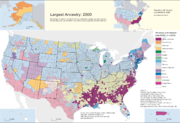



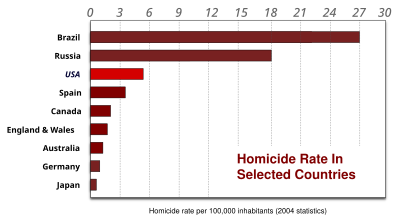


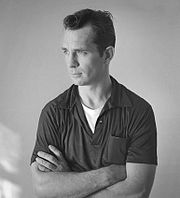
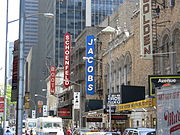

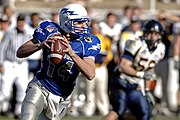



0 comments:
Post a Comment